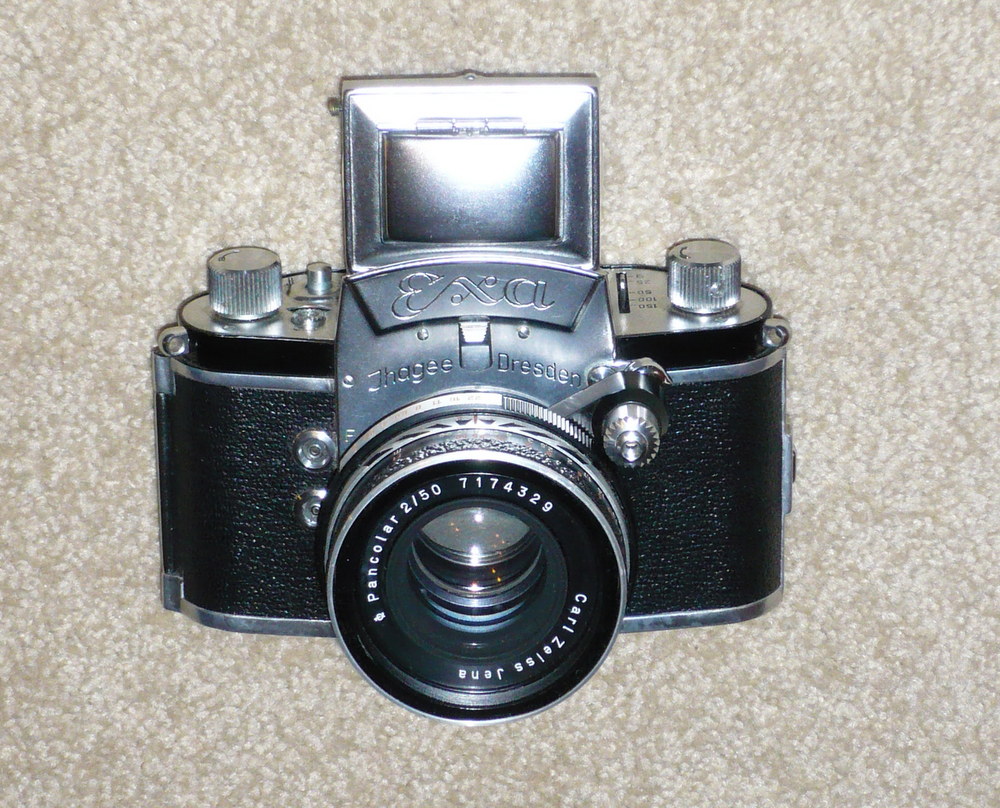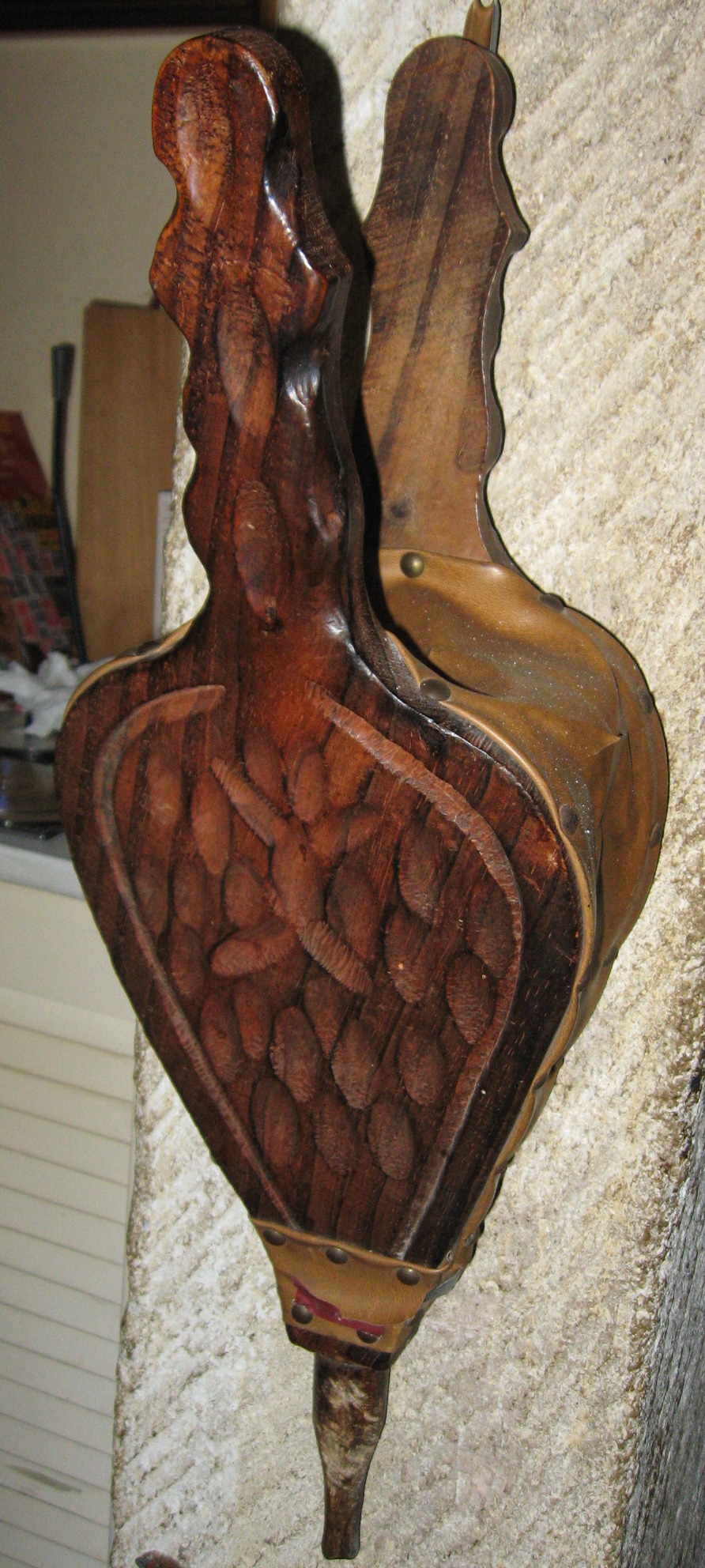|
Twin Lens Reflex
A twin-lens reflex camera (TLR) is a type of camera with two objective lenses of the same focal length. One of the lenses is the photographic objective or "taking lens" (the lens that takes the picture), while the other is used for the viewfinder system, which is usually viewed from above at waist level. In addition to the objective, the viewfinder consists of a 45-degree mirror (the reason for the word ''reflex'' in the name), a matte focusing screen at the top of the camera, and a pop-up hood surrounding it. The two objectives are connected, so that the focus shown on the focusing screen will be exactly the same as on the film. However, many inexpensive "pseudo" TLRs are fixed-focus models to save on the mechanical complexity. Most TLRs use leaf shutters with shutter speeds up to 1/500 of a second with a bulb setting. For practical purposes, all TLRs are film cameras, most often using 120 film, although there are many examples which used 620 film, 127 film, and 35 mm fil ... [...More Info...] [...Related Items...] OR: [Wikipedia] [Google] [Baidu] |
Rollei
Rollei () is a German manufacturer of optical instruments founded in 1920 by and in Braunschweig, Lower Saxony, and maker of the Rolleiflex and Rolleicord series of cameras. Later products included specialty and nostalgic type films for the photo hobbyist market. Originally named ''Werkstatt für Feinmechanik und Optik, Franke & Heidecke'', the company renamed into ''Rollei-Werke Franke & Heidecke GmbH'' in 1972, ''Rollei-Werke Franke & Heidecke GmbH & Co. KG'', in 1979, and ''Rollei Fototechnic GmbH & Co. KG'' in 1981. After being purchased in 1995 by Samsung Techwin, part of the South Korean Samsung Group, it was sold back to its internal management in 1999. In 2002, it was bought by a Danish investment group, and renamed ''Rollei GmbH'' in 2004. In 2005/2006, the company headquarters moved to Berlin and the company was split into two different companies: ''Rollei GmbH'' in Berlin, owner of the Rollei brand and selling various OEM equipment, and ''Rollei Produktion GmbH'' ... [...More Info...] [...Related Items...] OR: [Wikipedia] [Google] [Baidu] |
Medium-format Camera
Medium format has traditionally referred to a film format in photography and the related cameras and equipment that use film. Nowadays, the term applies to film and digital cameras that record images on media larger than the used in 35 mm photography (though not including 127 sizes), but smaller than (which is considered large format photography). In digital photography, medium format refers either to cameras adapted from medium-format film photography uses or to cameras making use of sensors larger than that of a 35 mm film frame. Some of the benefits of using medium-format digital cameras include higher resolution sensors, better low-light capabilities compared to a traditional 35mm DSLR, and a wider dynamic range. Characteristics Medium-format cameras made since the 1950s are generally less automated than smaller cameras made at the same time. For example, autofocus became available in consumer 35 mm cameras in 1977, but did not reach medium format unti ... [...More Info...] [...Related Items...] OR: [Wikipedia] [Google] [Baidu] |
Cable Release
The Bulb setting (abbreviated B) on camera shutters is a momentary-action mode that holds shutters open for as long as a photographer depresses the shutter-release button. The Bulb setting is distinct from shutter's Time (T) setting, which is an alternate-action mode where the shutter opens when the shutter-release button is pressed and released once, and closes when the button is actuated again. History Decades before the first flashbulbs, some box cameras and many view cameras and folding cameras came with a detachable pneumatic shutter release with a rubber bulb on the end; "Bulb" refers to the rubber shutter release bulb. Though mechanically timed exposures could also be triggered by squeezing the shutter release bulb, "Bulb" exposures then had the same momentary action as camera shutters have today, as per this description from Sears Roebuck's 1909 ''Cameras Photographic Supplies'': Around 1894 in Germany, the momentary-action setting on camera shutters made by C. ... [...More Info...] [...Related Items...] OR: [Wikipedia] [Google] [Baidu] |
Leaf Shutter
In photography, a shutter is a device that allows light to pass for a determined period, exposing photographic film or a photosensitive digital sensor to light in order to capture a permanent image of a scene. A shutter can also be used to allow pulses of light to pass outwards, as seen in a movie projector or a signal lamp. A shutter of variable speed is used to control exposure time of the film. The shutter is constructed so that it automatically closes after a certain required time interval. The speed of the shutter is controlled either automatically by the camera based on the overall settings of the camera, manually through digital settings, or manually by a ring outside the camera on which various timings are marked. Camera shutter Camera shutters can be fitted in several positions: * Leaf shutters are usually fitted within a lens assembly (''central shutter''), or more rarely immediately behind (''behind-the-lens shutter'') or, even more rarely, in front of a lens, and s ... [...More Info...] [...Related Items...] OR: [Wikipedia] [Google] [Baidu] |
Shutter Lag
In photography, shutter lag is the delay between triggering the shutter and when the photograph is actually recorded, which includes all lag between when the shutter button is pressed and when the photo is taken, including metering and focus lag. it can be mitigated to an extent by pre-focusing and readying for action. Film cameras In film cameras, the delay is caused by the mechanism inside the camera that opens the shutter, exposing the film. Because the process is mechanical, however, and relatively brief, shutter lag in film cameras is often only noticeable (and of any concern) to professionals. SLRs have a slight additional lag due to the time it takes to move the mirror out of the way. Digital cameras Shutter lag is much more of a problem with digital cameras, although higher cost models tend to have less lag. The comet-tail artifact that early CCD sensors suffered from was significantly reduced by the invention of the pinned photodiode (PPD). It was invented by No ... [...More Info...] [...Related Items...] OR: [Wikipedia] [Google] [Baidu] |
Focal Plane Shutter
In camera design, a focal-plane shutter (FPS) is a type of photographic shutter (photography), shutter that is positioned immediately in front of the focal plane of the camera, that is, right in front of the photographic film or image sensor. Two-curtain shutters The traditional type of focal-plane Shutter (photography), shutter in 35 mm cameras, pioneered by Leitz for use in its Leica cameras, uses two shutter curtains, made of opaque rubberised fabric, that run horizontally across the film plane. For slower shutter speeds, the first curtain opens (usually) from right to left, and after the required time with the shutter open, the second curtain closes the aperture in the same direction. When the shutter is cocked again the shutter curtains are moved back to their starting positions, ready to be released. Focal-plane shutter at low speed ''Figure 1:'' The black rectangle represents the frame aperture through which the exposure is made. It is currently covered by the ... [...More Info...] [...Related Items...] OR: [Wikipedia] [Google] [Baidu] |
Single-lens Reflex Camera
In photography, a single-lens reflex camera (SLR) is a type of camera that uses a mirror and prism system to allow photographers to view through the lens and see exactly what will be captured. SLRs became the dominant design for professional and consumer-level cameras throughout the late 20th century, offering interchangeable lenses, through-the-lens (TTL) metering, and precise framing. Originating in the 1930s and popularized in the 1960s and 70s, SLR technology played a crucial role in the evolution of modern photography. Although digital single-lens reflex (DSLR) cameras succeeded film-based models, the rise of Mirrorless camera, mirrorless cameras in the 2010s has led to a decline in SLR use and production. With twin lens reflex and rangefinder cameras, the viewed image could be significantly different from the final image. When the shutter button is pressed on most SLRs, the mirror flips out of the light path and allows light to pass through to the light receptor and the im ... [...More Info...] [...Related Items...] OR: [Wikipedia] [Google] [Baidu] |
Bellows
A bellows or pair of bellows is a device constructed to furnish a strong blast of air. The simplest type consists of a flexible bag comprising a pair of rigid boards with handles joined by flexible leather sides enclosing an approximately airtight cavity which can be expanded and contracted by operating the handles, and fitted with a valve allowing air to fill the cavity when expanded, and with a tube through which the air is forced out in a stream when the cavity is compressed. It has many applications, in particular blowing on a fire to supply it with air. The term "bellows" is used by extension for a flexible bag whose volume can be changed by compression or expansion, but not used to deliver air. For example, the light-tight (but not airtight) bag allowing the distance between the lens and film of a folding photographic camera to be varied is called a bellows. Etymology "Bellows" is only used in plural. The Old English name for "bellows" was , 'blast-bag', 'blowing-ba ... [...More Info...] [...Related Items...] OR: [Wikipedia] [Google] [Baidu] |
Konica
was a Japanese manufacturer of, among other products, film, film cameras, camera accessories, photographic and photo-processing equipment, photocopiers, fax machines and laser printers, founded in 1873. The company merged with Japanese peer Minolta in 2003, forming Konica Minolta. History The company traces its history back to 1873 when pharmacist Rokusaburo Sugiura began selling photographic materials at his shop in Konishiya Rokubē, the biggest pharmacy trader in Tokyo at that time. In 1878, Rokusaburō succeeded to his family and renamed Rokuemon VI (Rokudaime Rokuemon). He gave the original shop to his younger brother and launched a new shop, Konishi Honten (Konishi Main Shop) in the Nihonbashi district of Tokyo. In 1882, Konishi launched a project to produce photography related materials in Japan which were imported at that time. In 1902, Konishi began to sell the "Cherry Portable Camera" (チェリー手提用暗函), the first Japanese produced end-user oriented camer ... [...More Info...] [...Related Items...] OR: [Wikipedia] [Google] [Baidu] |
Mamiya C220
The Mamiya C220 is a twin-lens reflex camera made in the early 1970s by the Japanese camera manufacturer Mamiya. The camera has interchangeable lenses ranging from 55 mm wide-angle to 250 mm telephoto and accepts 120 and 220 rollfilms. The rack and pinion focusing system with a bellows makes it possible for close-up photography without attachments. The straight film path has no sharp turns for absolute flatness of the film. Variations of the Mamiya TLR line from the Mamiyaflex to the C330S Professional continued the evolution of the TLR camera with the final TLR, the c330S Pro. Changeable lenses on medium format SLR and rangefinder cameras such as the Hasselblad line or Koni-Omega Press were the norm. The Mamiya twin lens reflex cameras are among the very few medium-format TLR cameras with interchangeable lenses. * Dimensions: 118 mm (w) x 167 mm (h) x 113 mm (d) * Weight: 1.44 kg Lenses There are seven Mamiya Sekor lenses: ; 2 wide-angle le ... [...More Info...] [...Related Items...] OR: [Wikipedia] [Google] [Baidu] |







